bonchan/iStock/GettyImages
Beef brisket is one of the less expensive cuts of beef but it is large and flavorful, making it a great choice for moms looking to cut down on grocery bills. It’s a naturally boneless, rather tough cut of meat from the chest of the steer. Low-temperature cooking in the oven for a long period of time renders it fork-tender. Brisket also is the cut used to make corned beef, a brine-cured meat. You can simply slice and serve brisket or enhance oven-roasted brisket with tomato or barbecue sauce or use it in stew.
Buying Brisket
Although you may be able to purchase a large whole brisket, your butcher typically makes two cuts of meat from it. One is called a brisket tip or point, which is the fatty tip-end of the front chest muscle. Your butcher should trim the layer of fat from the tip brisket. The other cut is known as a flat, or plank, brisket. A plank cut is the flat, upper portion of the front chest muscle. Look for brisket that is marbled but not excessively fat. You’ll notice the long meat fibers that run the length of any brisket. Purchase a cut that will fit whole into your roasting pan.
Oven Method
Moisture is essential for cooking tender brisket in the oven. Use a pot with a tight-fitting lid, a lidded roasting pan or a large pan sealed with aluminum foil for best results. Place the brisket directly on the bottom of the pan and not on a rack. The brisket cooks best if it is immersed in the hot juices. Pour boiling water or beef stock about 1 or 2 inches deep into the roaster with the brisket before placing the roasting pan in the oven.
Temperature and Cooking Time
Set the oven temperature at 300 or 325 degrees F, and allow about 60 minutes of cooking time per pound of brisket. For example, a typical 3-lb. plank brisket needs to roast for about 3 hours. Because a tip brisket is thicker, it will take longer to reach the safe internal temperature. As of May 24, 2011, the USDA recommends cooking whole meats to an internal temperature of 145 degrees F. You can add vegetables during the last hour of cooking time, and if you want the meat lightly browned on top, you should remove the lid for the last 30 minutes.
Corned Beef
A corned beef brisket usually comes in a sealed plastic pouch with a small packet of spices enclosed. A typical blend of these spices might be based on garlic and peppercorns with bay leaf and other herbs and spices mixed in. You should drain and discard the brine from the packaging pouch and cook the corned beef brisket in the oven as you would a regular brisket. You can sprinkle the spice packet contents over the meat at the beginning of the roasting time or mix the spices into the roasting liquid and baste the meat as it cooks.
Using the Leftovers
If you're serving a 3-lb. brisket to a family of four, you will have ample leftovers for meals later in the week. Use the brisket on a salad or in sandwiches. In a large salad bowl, add mixed greens, cooked and sliced potatoes, chopped fresh veggies and the brisket. Top with a creamy salad dressing. For an easy sandwich, layer thin slices of meat on an onion roll or whole-wheat bun. Add lettuce, tomato, and onion, and dress the sandwich with barbecue sauce or creamy dressing.
Related Articles

How to Convection Roast a Brisket

What Is the Difference in Top Sirloin & ...
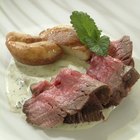
How to Cook a Four-Pound Sirloin Tip ...
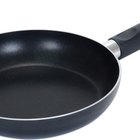
How to Cook Beef Top Round Pot Roast

How to Marinate a Top Round Roast

How to Make a Roast in an Electric Fry ...

How to Cook a Large Amount of Corned ...
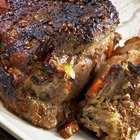
Barbecue Tips for Pork Rib Brisket
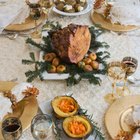
Shank Ham Cooking Directions
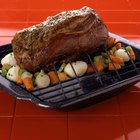
How to Cook a Whole Sirloin Tip Beef ...

How Long Does It Take to Cook a ...

How to Cook the Neck of a Deer

How to Cook a Petite Filet of Beef in ...
How to Cook Buffalo Fillet
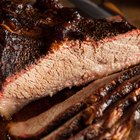
How to Steam a Brisket of Beef

Calories in Beef Rump Roast

How Long to Cook a Rump Roast for It to ...

How to Cook an 8- to 10-Pound Beef ...
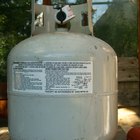
How to Barbeque a Brisket on a Gas Grill
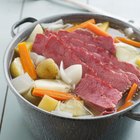
How to Pickle Beef Brisket
References
Resources
Writer Bio
Fern Fischer's print and online work has appeared in publications such as Midwest Gardening, Dolls, Workbasket, Quilts for Today and Cooking Fresh. With a broader focus on organic gardening, health, rural lifestyle, home and family articles, she specializes in topics involving antique and modern quilting, sewing and needlework techniques.